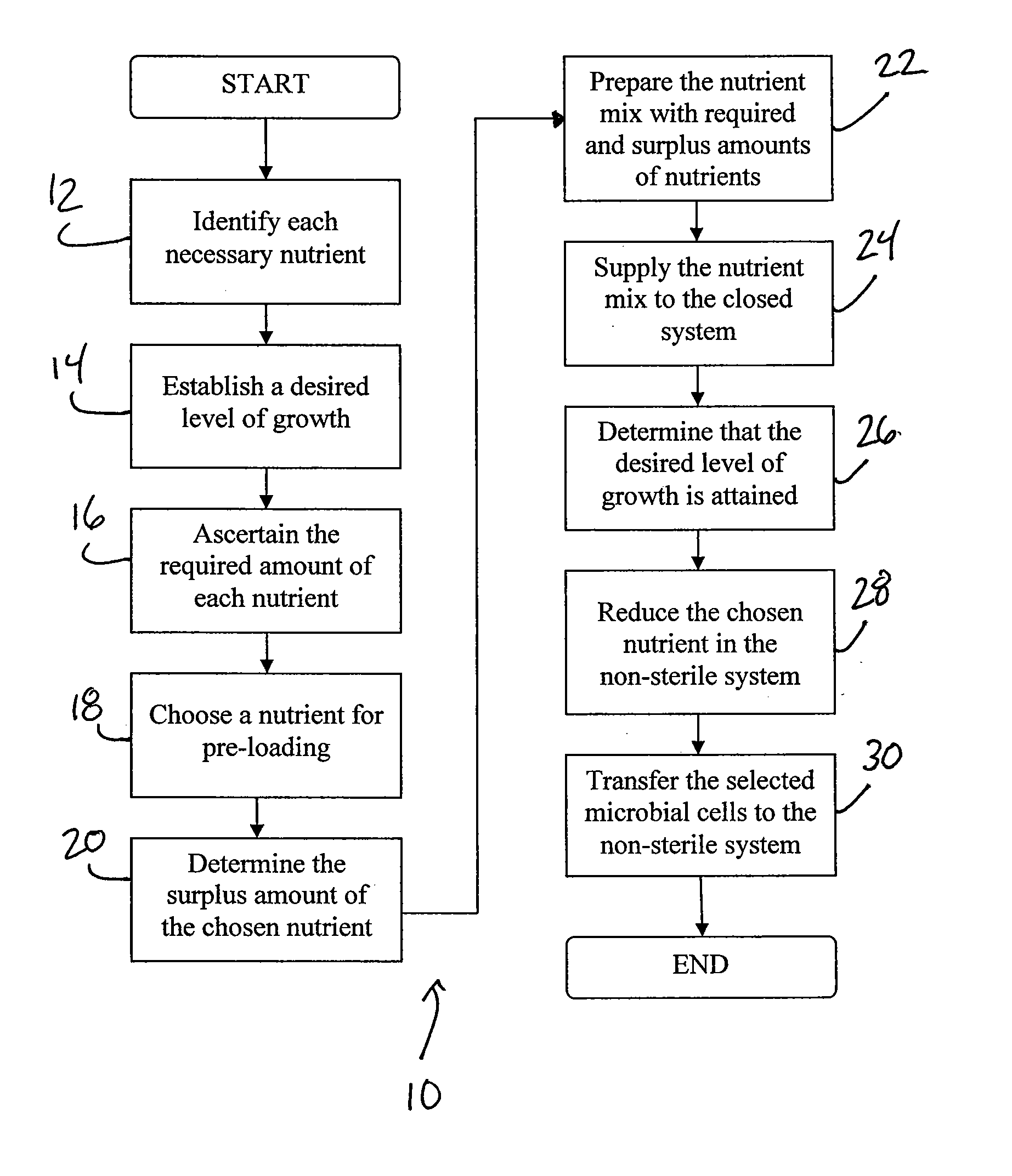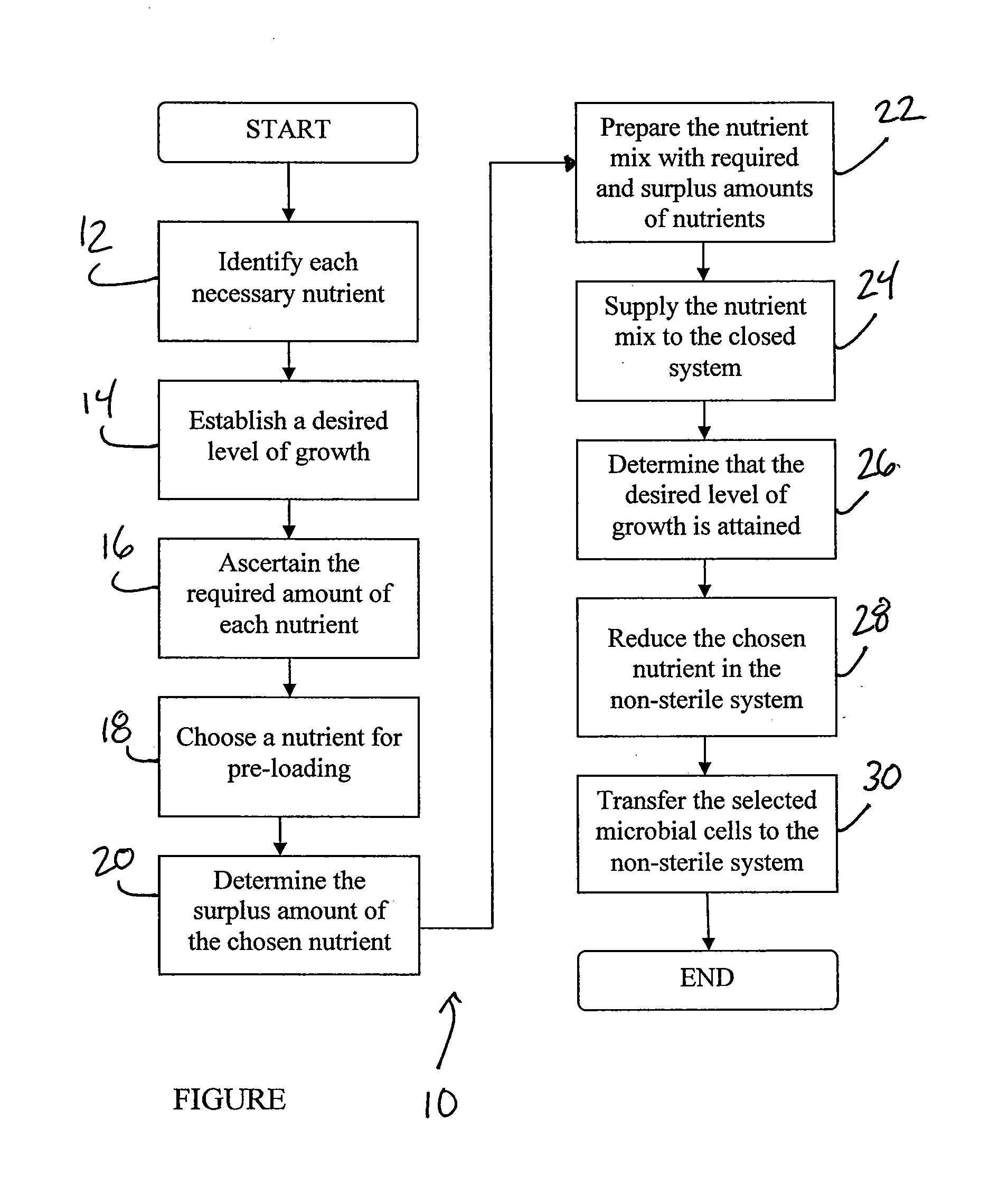Method for Nutrient Pre-Loading of Microbial Cells
a nutrient pre-loading and microbial cell technology, applied in the field of nutrient pre-loading of microbial cells, can solve the problems of inability to grow contaminant organisms and compete with selected microbial cells for nutrients or sunlight, and achieve the effect of maximizing the growth rate of selected microbial cells in the non-sterile reactor system
- Summary
- Abstract
- Description
- Claims
- Application Information
AI Technical Summary
Benefits of technology
Problems solved by technology
Method used
Image
Examples
Embodiment Construction
[0014]In the FIGURE, it can be seen that the method, generally designated by reference number 10, can be considered to begin with the step of identifying each nutrient necessary for growth of selected microbial cells (action block 12). Generally, these nutrients include macronutrients such as phosphorus, nitrogen, calcium, sulfur, carbon, hydrogen, oxygen, iron, magnesium and potassium and micronutrients which may include silicon, chloride, sodium, copper, zinc, and manganese. However, the selected microbial cells may require fewer or more nutrients than those listed here.
[0015]At action block 14, a desired level of growth is established for the microbial cells. Typically, the desired level of growth will be related to the original concentration of the microbial cells and to the size of the closed system used to grow the microbial cells.
[0016]With the desired level of growth in mind, the amount of each identified nutrient required to support such growth can be ascertained (action bl...
PUM
| Property | Measurement | Unit |
|---|---|---|
| time | aaaaa | aaaaa |
| time | aaaaa | aaaaa |
| energy | aaaaa | aaaaa |
Abstract
Description
Claims
Application Information
 Login to View More
Login to View More - R&D
- Intellectual Property
- Life Sciences
- Materials
- Tech Scout
- Unparalleled Data Quality
- Higher Quality Content
- 60% Fewer Hallucinations
Browse by: Latest US Patents, China's latest patents, Technical Efficacy Thesaurus, Application Domain, Technology Topic, Popular Technical Reports.
© 2025 PatSnap. All rights reserved.Legal|Privacy policy|Modern Slavery Act Transparency Statement|Sitemap|About US| Contact US: help@patsnap.com


